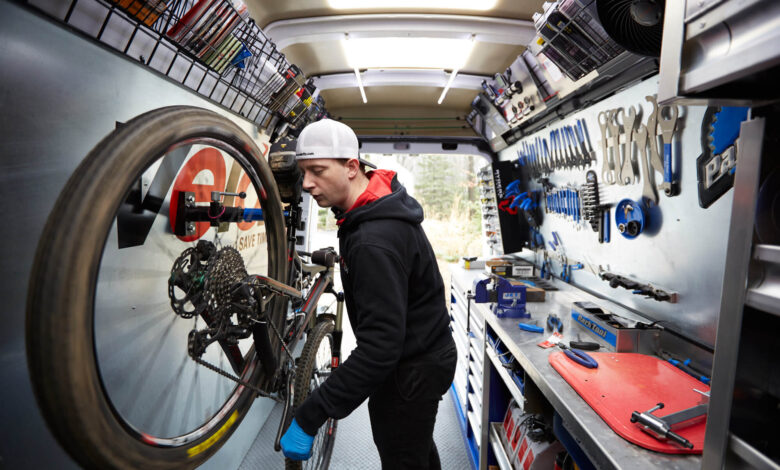What Comes First in Running a Thriving Bicycle Repair Shop

Are you still thinking where to start revamping your bicycle repair shop software?
For starters, it’s safe to admit that operating a bicycle repair company is a fulfilling yet difficult task, but so is every other business. Repair shops are becoming essential for preserving sustainable urban living in cities where eco-conscious commuting is growing. Though some stores flourish with devoted consumers and consistent income, others fight and finally close. Anyone wanting to begin or advance in the repair company must first grasp what distinguishes successful companies from those that fail.
Important Qualities of Successful Bicycle Repair Shops
Successful bicycle repair businesses show a mix of operational discipline, technical ability, and customer-centric culture. Their prompt service and attention to detail are well renowned. Mechanics in these businesses show great knowledge and a love of cycling, which is clear in their work. Customers rely on them not just to address an issue but also to keep their bicycles for long-term use.
Successful repair shops share a consistent quality with the help of technology like bicycle repair shop software. Excellent service is provided regardless of the complexity of the task at hand, be it a simple tire change or a complex rebuild. Companies like these, which are frequently involved in community activities or offer riding advice to newcomers, contribute to the development of communal relations. Each of their stores is neatly organized, friendly, and clearly displays the services that are offered.
Why a Bicycle Repair Shop Fails
On the other hand, failing repair shops frequently share a number of blunders that could have been readily avoided. Providing poor service to customers is at the very top of the list. Customers might be quickly turned off by personnel who are impolite, communication that is not clear, or maintenance that is delayed. In addition, a great number of stores close their doors, so disregarding the commercial part of operating a business.
The failure to adapt to changing circumstances is another factor. Retail establishments that continue to use outdated systems usually face challenges in the areas of scheduling, inventory management, and billing. The inefficiencies that emerge from these inefficiencies include lost time, missed appointments, and dissatisfied customers. In addition, ignoring promotion is a disappointing decision. If a store does not have a web presence, does not have good signage, or does not participate in the community, it may be utterly neglected.
The Importance of Operational Efficiency
Efficiency in business operations is the essential foundation of a bicycle repair company. Increasing the effectiveness of operations is the first step in improving a failed bicycle repair shop. When it comes to resources, time is one of the most valuable commodities in a repair company. Processes at efficient stores are planned in such a way as to reduce wait times and enhance turnover rates. Staff members are able to know exactly what to do in every circumstance thanks to standard operating procedures, which cover everything from the initial intake to the conclusion of the service.
One of the most important aspects of the workshop is its arrangement. In order to reduce the amount of time spent searching for tools, it is important to have tools and spare components readily available. In order to avoid overbooking, scheduling systems should be designed to optimize the amount of bicycles that are serviced on a daily basis. To identify areas for improvement, shops are required to keep a close eye on performance metrics such as the average amount of time it takes to repair a vehicle and the percentage of customers that return.
Customer Satisfaction is a Top Priority
The satisfaction of customers is not a side effect but rather a strategy. The contentment of one’s customers is not a surprise. It is the result of deliberate actions and policies that place the rider’s experience at the forefront of their priorities. Communication that is open and honest is one of the essential components. It is important for customers who leave a bike to be aware of exactly what they can anticipate. Establishing confidence and reducing disagreement can be accomplished by the presentation of transparent quotes, fair timescales, and regular updates.
Post-service follow-up actions are yet another method that the majority of people overlook. A brief message inquires about the bike’s functioning once it has been repaired, so enhancing the impression of being compassionate and professional. When customers are satisfied with their purchases, they are more likely to leave positive feedback, tell their friends about the store, and return for additional services.
The Role That Contemporary Inventory Control Methods Play in Operation
As an issue, inventory control is one that many conventional repair companies struggle with. Having a shortage of components that are regularly utilized, such as brake pads or wires, could cause repairs to be delayed, which would irritate customers. On the other hand, an excessive amount of inventory causes the work environment to become cluttered and wastes money. These problems are addressed by a modern inventory management system, which does so by enabling the tracking of components and supplies in real time.
These approaches enable automatic replenishment of inventory when it reaches a certain level that has been established. There is no longer a need for proprietors of shops to either physically count things or worry about forgetting essential components. Customers are able to view their order history, information about their suppliers, and current supply from a single dashboard.
Key Takeaways
It is important to remember that running a bicycle repair business is about more than just fixing bicycles. Building mechanisms that give service that is prompt, consistent, and pleasant each and every time is the focus of this endeavor. As a result of focusing on operational efficiency, customer satisfaction, and current technology such as computerized invoicing and inventory in bike repair shop software, repair firms are able to not only survive but also thrive in the very competitive market that exists today.




